- News
- Reviews
- Bikes
- Accessories
- Accessories - misc
- Computer mounts
- Bags
- Bar ends
- Bike bags & cases
- Bottle cages
- Bottles
- Cameras
- Car racks
- Child seats
- Computers
- Glasses
- GPS units
- Helmets
- Lights - front
- Lights - rear
- Lights - sets
- Locks
- Mirrors
- Mudguards
- Racks
- Pumps & CO2 inflators
- Puncture kits
- Reflectives
- Smart watches
- Stands and racks
- Trailers
- Clothing
- Components
- Bar tape & grips
- Bottom brackets
- Brake & gear cables
- Brake & STI levers
- Brake pads & spares
- Brakes
- Cassettes & freewheels
- Chains
- Chainsets & chainrings
- Derailleurs - front
- Derailleurs - rear
- Forks
- Gear levers & shifters
- Groupsets
- Handlebars & extensions
- Headsets
- Hubs
- Inner tubes
- Pedals
- Quick releases & skewers
- Saddles
- Seatposts
- Stems
- Wheels
- Tyres
- Health, fitness and nutrition
- Tools and workshop
- Miscellaneous
- Tubeless valves
- Buyers Guides
- Features
- Forum
- Recommends
- Podcast
BUYER'S GUIDE
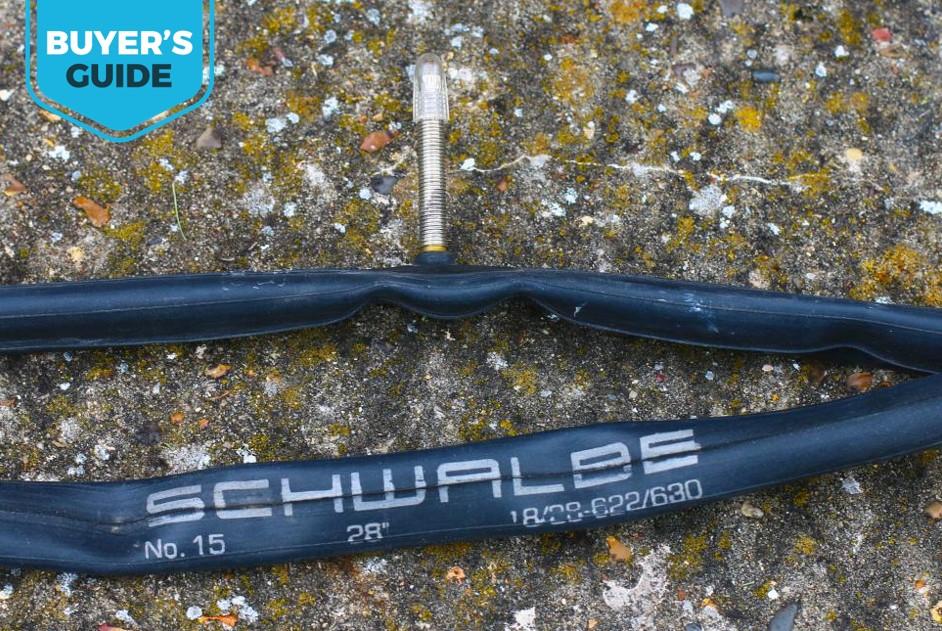 inner tube guide main image
inner tube guide main imageBest bike inner tubes 2025 — save weight, ride faster and prevent flats
The best bike inner tubes do quite a lot more than just hold the air in your tyres. They can make your bike faster, lighter or – by preventing punctures – more reliable. The road.cc team have ridden hundreds of thousands of miles on a vast range of inner tubes, so these are the ones we recommend above all others.
- Best overall inner tube: Schwalbe SV15 Road Tube — Buy Now for £4.00 from Merlin Cycles | $8.99 from Amazon.com | Find out more
- Lightest inner tube: Tubolito Tubo Road 700C — Buy Now for £20.90 from Mantel | $32.33 from Amazon.com | Find out more
- Best on a budget: LifeLine Road Inner Tube — Buy Now for £2.49 - £2.99 from Wiggle | Find out more
- Best rolling resistance: Michelin Air Comp Latex — Buy Now for £10 or 5 for £40 from Mantel | $25.99 from Amazon.com | Find out more
- Best puncture resistance: Slime Smart — Buy Now for £14.50/2 from Amazon | $6.96 from Amazon.com | Find out more
Choosing the best inner tubes is a surprisingly cheap way to improve some aspect of your bike's performance, be it speed or reliability. If all that matters to you is going fast, the best inner tubes — and the choice of fast riders for many decades —are made from natural latex rubber, but read on: they have downsides.
Fed up of flats? Inner tubes with built-in sealant can fix punctures for you as you ride, often before you even know they've happened.
Every few years a new inner tube technology pops up, usually involving high-strength exotic plastic; we discuss the latest one below.
The best inner tubes you can buy
Best overall inner tube: Schwalbe SV15 Road Tube — Buy Now for £4.00 from Merlin Cycles
To be fair, the mid-priced tubes from the likes of Michelin, Continental, Schwalbe, Specialized, Hutchinson at al are all pretty decent. We're going for Schwalbe here because they're a very sensible price, good quality, have removable valve cores so you can put sealant in them if you want and come with a cool transparent valve cap. As with all removable-core tubes you do have to make sure the core's screwed in nice and snug or some pumps can unscrew it.
Lightest inner tube: Tubolito Tubo Road 700C — Buy Now for £20.90 from Mantel
They may be expensive, but compared to a tubeless conversion – or a new wheelset – the 38g high-tech thermoplastic Tubo Road tubes from Tubolito are a cost-effective way of shedding some weight. They promise some puncture resistance benefits as well.
Compared to a random butyl 700C tube grabbed from the garage, the Tubo offers a saving of 60-70g. That's per tube. So for an outlay of about £40 you can shave 120-140g (4-5oz) off the weight of your bike.
Also available at Amazon.com from $32.33
Read our review of the Tubolito Tubo Road 700C
Find a Tubolito dealer
Best on a budget: LifeLine Road Inner Tube — Buy Now for £2.49 - £2.99 from Wiggle
The market for inexpensive standard inner tubes has become very competitive in the last couple of years. With a weight of around 120g, these tubes are good value at around two-fifty each (£2.99 for the longest-valve version).
They hold air perfectly adequately but their manufacturing tolerances are surprisingly wide. I bought four recently and they weighed 110g, 116g, 118g and 131g, and we've seen the occasional Lifeline tube exhibit random bulges when inflated off the bike, but for £2.49 who's really complaining?
Best rolling resistance: Michelin Air Comp Latex — Buy Now for £10 or 5 for £40 from mantel
If you want to get into latex (stop sniggering at the back), then Michelin's highly-regarded tubes are your most widely-available option.
At a claimed 75g they're a bit lighter than a standard tube, which is a good start. Being latex they're more flexible than butyl and will therefore reduce both rolling resistance and frequency of punctures.
Best puncture resistance: Slime Smart — Buy Now for £14.50/2 from Amazon
With a payload of Slime sealant inside a butyl tube, Slime's Smart tube weighs 170g, so the very effective self-healing capability has a penalty of about 70g over a standard tube.
Our tester experienced no punctures while using the Smart tube, but that might just have been the Puncture Fairy looking the other way for a few weeks.
So he deliberately ran over a drawing pin, then took it out straight away and found the sealant stopped air escaping after the pressure had dropped by about 30psi, leaving enough air in the tyre to get you home, and of course it's rather easier to add 30psi to your tyres in the field than to replace a tube.
Michelin AirComp Ultralight — Buy Now for £6.00 from Chain Reaction Cycles
For around six quid these 75g butyl tubes will knock off a few grams without breaking the bank.
Continental Supersonic — Buy Now for £10.00 from Sigma Sport
The lightest butyl rubber inner tubes currently available, these are amazingly thin-walled. That makes them a bit fragile — you need to be careful installing them — but if saving weight is your aim, these are the best butyl inner tubes you can get.
Also available at Amazon.com from $25.49
Schwalbe SV20 X-Light — Buy Now for £7.00 from Merlin Cycles
If you want to stick with butyl tubes for their air retention, but still lose a bit of rotating weight, these 65g tubes from Schwalbe are well worth your consideration especially as they're not as fragile as the Conti Supersonics.
Vredestein Race Latex Presta — Buy Now for £11.70 or £46.70 for 5 from Mantel
At just 50g each, Vredestein's latex inner tubes are as light as Continental Supersonics, but being latex will be more flexible and therefore make for tyre/tube combinations with lower rolling resistance. The porosity of latex means you're going to have to inflate your tyres every day, so these are tubes for a special pair of race or time trial wheels, to be rolled out when every second counts.
Kenda Thorn-resistant inner tubes — Buy Now for £9.99 from Winstanleys Cycles
There are situations — like thorn-strewn farm lanes and city streets infested by broken glass — where the simple barrier of an extra-thick inner tube can help reduce the frequency of punctures. As tester Shaun found, "made from 4.6mm thick butyl, they’re four times thicker than your bog standard tube. Aboard my four-seasons fixer with 38mm rubber they’ve laughed at flints,and thorns. Riding through shards of glass may have nicked the tyres but it’s never touched the tubes."
Everything you need to know about inner tubes
Inner tubes affect the rolling resistance of your tyres, how easily you can end up sidelined with a puncture and the rotating weight of your wheels. If you care about performance — whether you mean by that speed or robustness and reliability — it’s worth thinking about the best inner tubes you could use and not just where you can get 10 for £20.
Rolling resistance
The rolling resistance of tyres comes from the force needed to bend the tyre where it contacts the road. But the inner tube has to bend too, so if it’s thick, then the rolling resistance of the whole combination goes up.
The flexibility of the inner tube material makes a difference too. Inner tubes are made from either synthetic butyl rubber or natural latex rubber. Latex is more flexible and thinner too, so if you want to reduce rolling resistance then latex is the way to go. According to Jarno Bierman at bicyclerollingresistance.com, you’ll save 4-5 Watts using latex inner tubes over butyl tubes. That’s probably not a difference you can feel, but it’s one you can measure with a stopwatch.
So latex inner tubes are the best inner tubes? Not necessarily. The big disadvantage is that they’re more porous than butyl tubes. That means that they leak air sufficiently quickly that you’ll need to pump them up every day.
A wrinkle to all of this is that thinner and lighter butyl inner tubes have become available in the last few years. Bierman tested a 100g butyl tube against an 80g latex tube, but you can get butyl tubes as light as 50g. Because they’re thinner, they have lower rolling resistance but won’t lose air like latex, but their increased fragility means they need more care in handling and puncture more easily.
Tyre maker Challenge cautions against the use of latex inner tubes with carbon fibre rims. It says: “Carbon rims do not dissipate heat as well as aluminium and prolonged braking, such as on long descents, may lead to hot spots along the braking surface. This increased heat can damage the latex material leading to a failure.”
Puncture resistance
Latex inner tubes have been claimed to be more puncture-resistant, because the rubber is inherently stretchier. Whether that makes a difference on the road is debatable as a tube held in place by a tyre may not be able t stretch as much as a tube being pressed against a broken bottle in an advert. For everyday riding you probably don’t want fewer punctures to come at the expense of daily inflation anyway.
Sealants are a better solution. Preparations such as Slime contain small rubber particles suspended a liquid that dries on exposure to air. It’s pretty effective at sealing holes up to about 3mm across. However, it’s hard to squeeze a sealant through a standard Presta valve so sealant makers offer tubes with the fluid already inside. If you want to roll your own, then you want tubes with removable valve cores.
Sealants aren’t perfect. If you get a big enough cut, the sealant won’t work and you’ll need to install a regular tube. Sealant-filled tubes are difficult to repair because the sealant stops the patch from sticking.
Sealants also add weight, but for the kind of everyday cycling application where you’d use them to prevent flats, you’re probably not going to mind an extra few grams.
Weight
If you’re not aiming for everyday riding puncture prevention, then a weight reduction is nice to have. A typical inexpensive inner tube — like the ones your bike probably came with — weighs 100-110g; Continental’s Supersonic tube weighs 55g (all weights for inner tubes with 60mm valves).
A 100g weight saving isn’t huge, but a pair of Supersonics is less than £20. There aren’t many places on a bike where you can get a weight saving of 5g/£. If you’re replacing a bike’s stock tyres with lighter rubber, it’s worth getting better, lighter tubes too.
About road.cc Buyer's Guides
The aim of road.cc buyer's guides is to give you the most, authoritative, objective and up-to-date buying advice. We continuously update and republish our guides, checking prices, availability and looking for the best deals.
Our guides include links to websites where you can buy the featured products. Like most sites we make a small amount of money if you buy something after clicking on one of those links. We want you to be happy with what you buy, so we only include a product if we think it's one of the best of its kind.
As far as possible that means recommending equipment that we have actually reviewed, but we also include products that are popular, highly-regarded benchmarks in their categories.
Here's some more information on how road.cc makes money.
You can also find further guides on our sister sites off.road.cc and ebiketips.
road.cc buyer's guides are maintained by the road.cc tech team. Email us with comments, corrections or queries.
John has been writing about bikes and cycling for over 30 years since discovering that people were mug enough to pay him for it rather than expecting him to do an honest day's work.
He was heavily involved in the mountain bike boom of the late 1980s as a racer, team manager and race promoter, and that led to writing for Mountain Biking UK magazine shortly after its inception. He got the gig by phoning up the editor and telling him the magazine was rubbish and he could do better. Rather than telling him to get lost, MBUK editor Tym Manley called John’s bluff and the rest is history.
Since then he has worked on MTB Pro magazine and was editor of Maximum Mountain Bike and Australian Mountain Bike magazines, before switching to the web in 2000 to work for CyclingNews.com. Along with road.cc founder Tony Farrelly, John was on the launch team for BikeRadar.com and subsequently became editor in chief of Future Publishing’s group of cycling magazines and websites, including Cycling Plus, MBUK, What Mountain Bike and Procycling.
John has also written for Cyclist magazine, edited the BikeMagic website and was founding editor of TotalWomensCycling.com before handing over to someone far more representative of the site's main audience.
He joined road.cc in 2013. He lives in Cambridge where the lack of hills is more than made up for by the headwinds.
Latest Comments
- Ashok C 2 hours 32 min ago
The comment about the possible lack of mudguard mounts is absolutely brilliant! Cheers.
- hawkinspeter 3 hours 30 min ago
I used an iPump Twist a couple of times and it's not exactly designed for pushing a lot of air but didn't give me any issue apart from taking a...
- ktache 3 hours 57 min ago
I think most would be shocked by the death toll is at least four a day.
- hapaxlegomenon 4 hours 22 min ago
these look like they run super Duper narrow!
- hapaxlegomenon 4 hours 43 min ago
I agree on all points. In case you're wondering, this specific model runs a bit narrower than most other fizik SPD shoes that I've worn in the past...
- chrisonabike 5 hours 39 min ago
Ultimately the problem is humans. That is amplified by "mass motoring" - but even "professional drivers" mess up and kill....
- Miller 7 hours 10 min ago
Over on weight_weenies there's 310 pages of discussion on Light Bicycle so have a look there.
- Rendel Harris 7 hours 11 min ago
It's a thing... https://www.amazon.co.uk/Pilot-Carbon-Look-Decorative-Adhesive-Carbon/dp...
- nappe 8 hours 54 sec ago
Went past this just after it had happened, straight road, just after a mini roundabout with traffic calming all the way down the road......
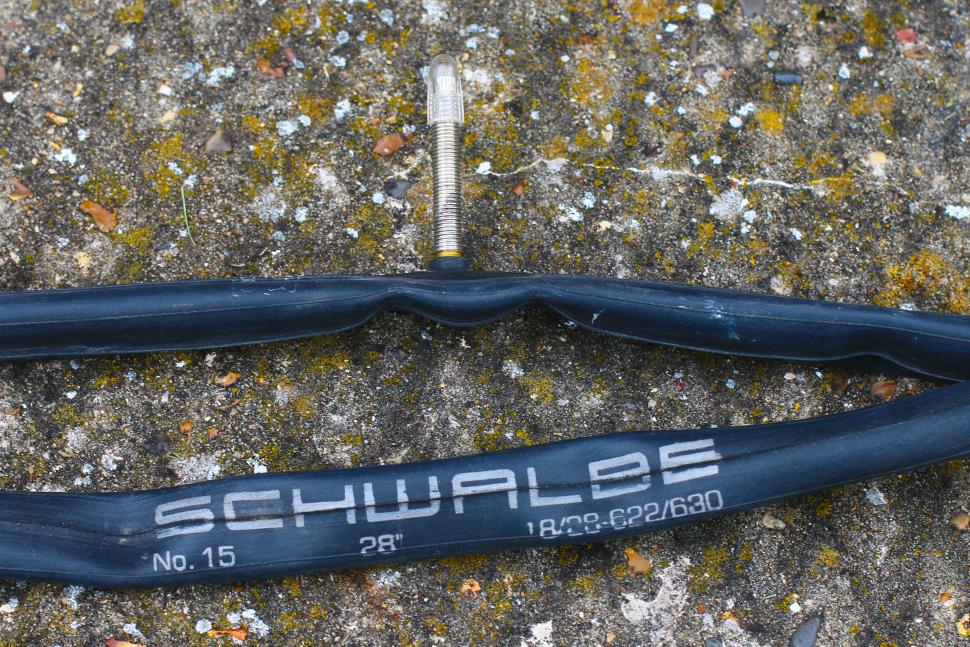
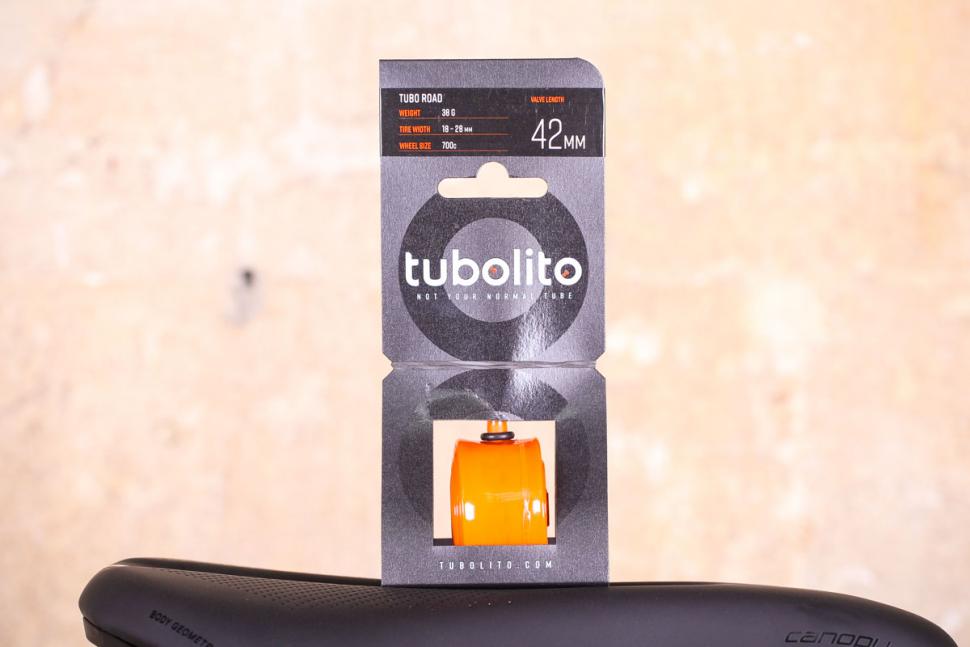
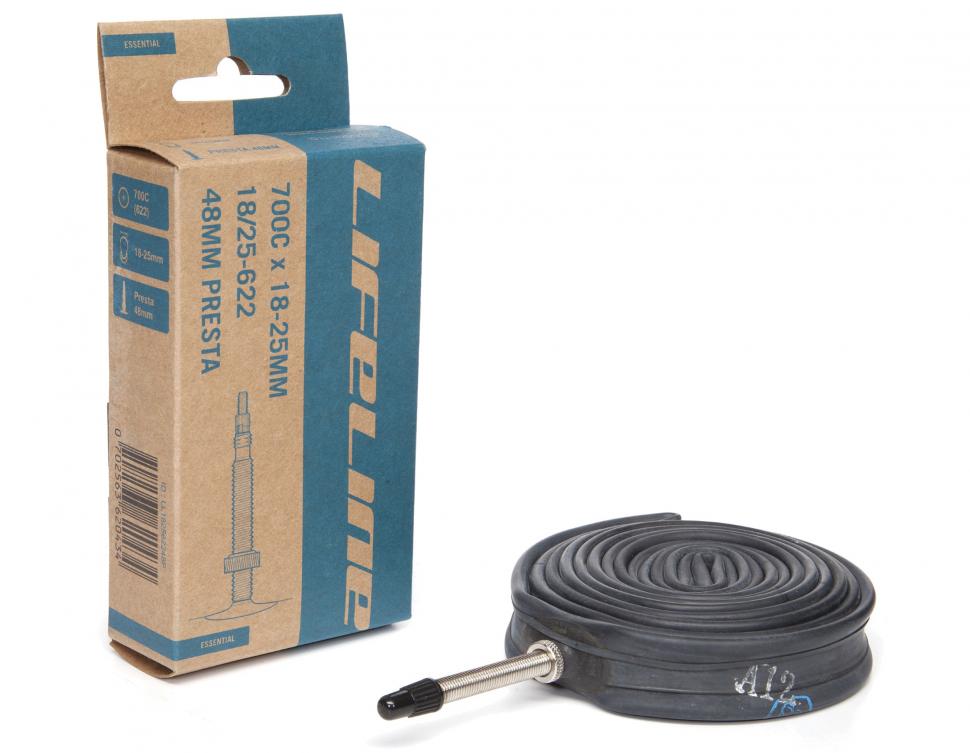
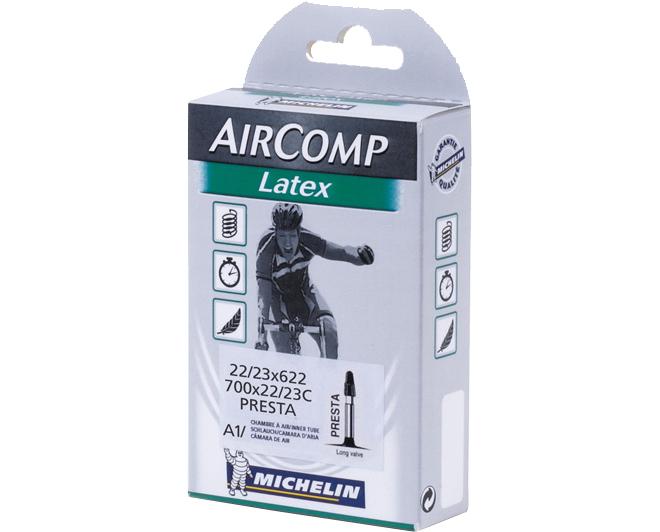
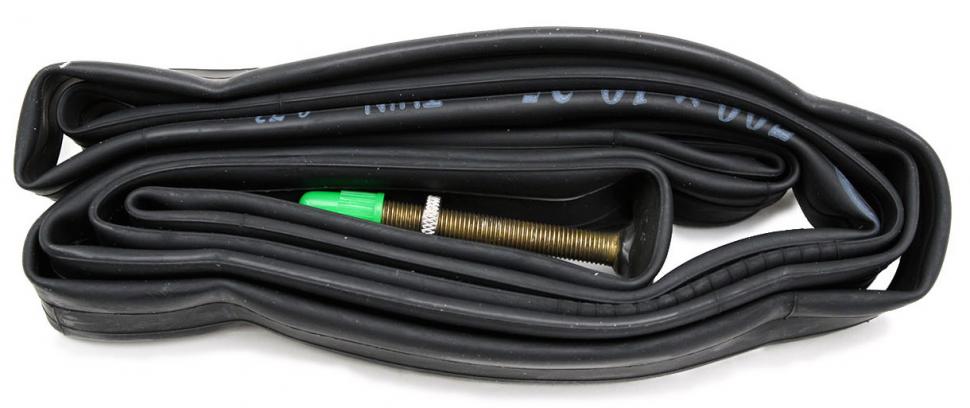
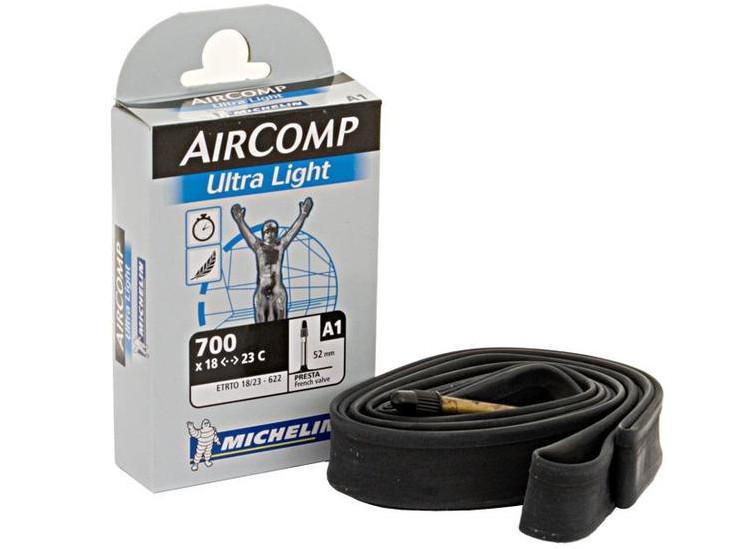


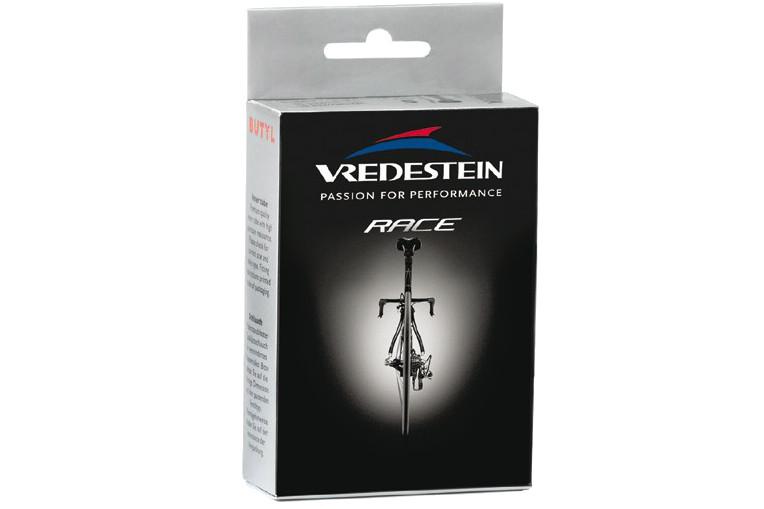
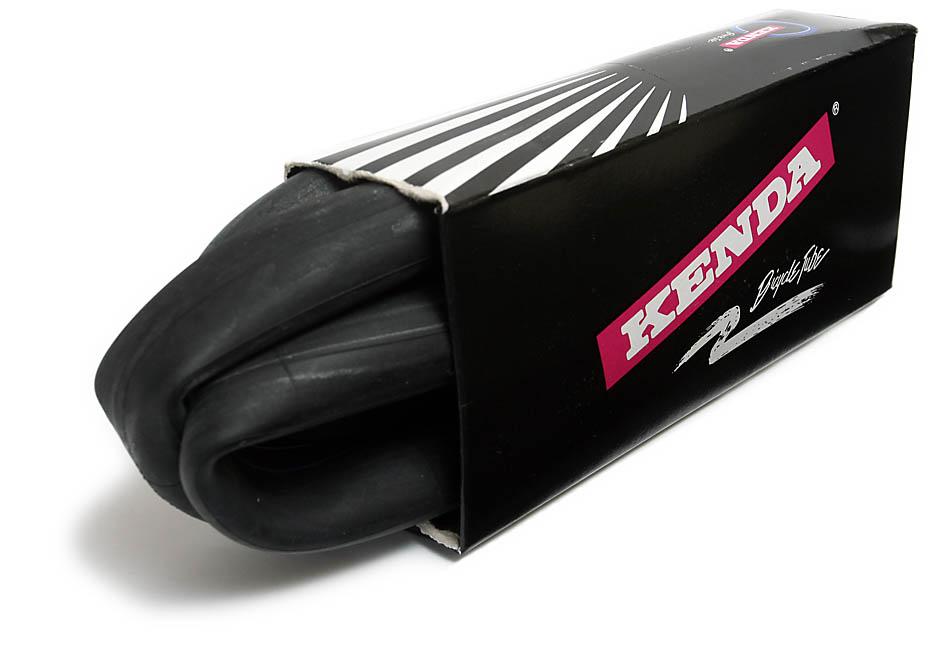
Add new comment
2 comments
I'd be a no on the Slime* approach as it causes as many problems as it solves.
I thought the range of ratings on the Scwalbe 18/28 622-630 was instructive - good for 29'er, 700c, 27" and many 28" set-ups.
Au sujet de wall thicknesses, presumably running let's say the Scwalbe SV-15s at the bottom, or the top of the width range will make a significant difference?
Wiggle /Lifeline are doing well on price, but a shout out from me also for Planet X / Vavert.
If your roadside pump is a screw-on/ off unwanted valve core removal is a major risk IME. If any pump you use is push-on/ off, I find the valve stems are quite flimsy and prone to bending, so the ability to replace is useful.
Michelin - no threading on the valve stem.
* except on my Gravel build where one of my Gravel Kings was such a tight fit that I doubt I could repair it trailside, so I've got a Zefal inflator/sealer tube packed.
Ah, the replacement valve dilemma.
On a pump that does not have a length of hose, and needs considerable speed and effort to use, it is highly unlikely that users will avoid breaking valve stems, yet the screw on valves are very easy to unscrew with the likes of a Lyzene pump.
I carry a core removal tool with me, but that doesn't rescue you when the valve insert has snapped in half inside the valve.
Agreed on slime, it rarely works. Whatever the trick is that gets sealant to seal on a tubeless tyre, it seems to be reluctant to do the same on an inner tube. I suspect, in part it will be that a thorn will be moving around if it pierced the inner tube, sort of like scratching a scab, while in a tyre the thorn is fairly stable - the relative movement increases as pressure drops.